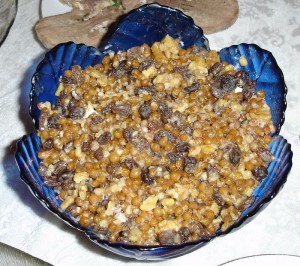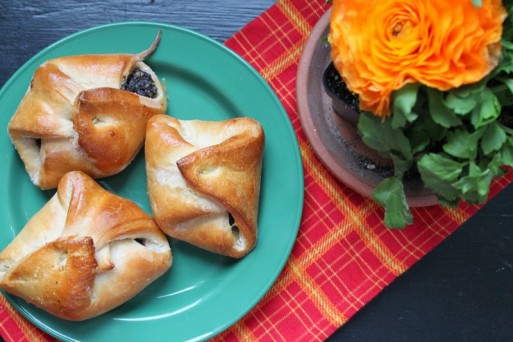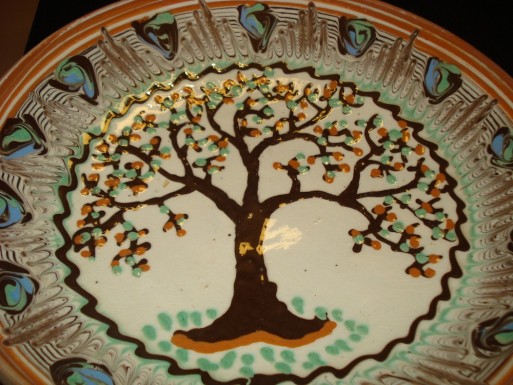In Romania, the customs and superstitions surrounding death stem from a blend of beliefs with preserved, pre-Christian elements as well as more current and predominantly Orthodox Christian beliefs. The Romanians have many superstitions about when the looming arrival of death will occur, some of which include the unexpected breaking of furniture or mirrors. Others involve unusual and inappropriate sounds that certain animals might emanate, such as when a hen crows like a cock or a dog’s howling. For Romanians, Death is especially lurking in the shadows when a house has both a sick person and a dog residing in it, and things become especially serious if the dog keeps its head down while howling and digging near the house. Additionally, the nearness of Death grows if the ill person keeps his or her eyes fixed upon his or her nails or upon a wall. Romanians also view owls as “death birds”, and their calls hold the title of being the most powerful omen for death.
Only a stranger can hold the light for someone dying because otherwise death will be a slow and painful process if a relative holds it.
Light and songs play an extremely important role when it comes to someone’s death in Romania. Only a stranger can “hold the light” (a candle) for someone dying, otherwise death will be a slow and painful process. Holding the light leads to the creation of several mournful songs called “doinas.”
Often, a lit candle represents a dying person’s faith in Christianity and the belief that his or her spirit will be touched by light while he or she dies. A series of many rituals — some even dating back to Roman times — occur during the process of death in order to alleviate some of the superstitions surrounding death.
To prepare for the final journey, loved ones open doors and cover water pails to allow the spirit, and death, to escape.
To prepare for the final journey, loved ones open doors and cover water pails to allow the spirit and death to escape (but prevent the spirit from falling and drowning). Once the bathing of the body (also tradition) is complete, loved ones leave water at the feet so the soul can have a chance to bathe. Strands of hair are collected so they can be secretly placed on the door, since Luck’s origin is never certain.
Much detail goes into the preparation of bodies for vigils and funerals. Clothing varies depending on how old people are when they die. Elderly people usually pick out their burial outfits ahead of time. Young, unmarried people are dressed in wedding clothes for their funerals. Due to a belief that those who die become angels, babies’ shirts are cut in order to help them fly. The bodies of the dead are placed on the ground, with heads to the east and feet to the door, so that they can figure out where they are headed next to on their final journeys. The final tokens given are candles fixed in the late one’s hands to help guide the way and escape evil. Coins are also placed in their hands — tender to pay for the boats that will carry them to the next world.
When the head of the family dies, the harnesses of oxen are placed upside-down to symbolize the “topsy-turvy” turn life takes without someone we are used to.
Animals are driven away to prevent the souls of the dead from either becoming ghosts or entering into the bodies of the animals. When the head of the family dies, the harnesses of oxen are placed upside-down to symbolize the “topsy-turvy” turn life takes without someone we are used to.
Finally, before the vigil and funeral, Romanians prepare several food items, or alms, while keening women perform a lament called a “bochirea.” The bochirea is highly improvised and customized for the person being mourned. Performances happen three times during the morning, afternoon and evening as the bells ring. Keening women take great care not to let tears fall on the face of the person who has died.

Coliva
(Credit: Wikipedia.org)
During keening time, relatives prepare the symbolic food, or, “alms” like the sweet bread “kolachei.” “Coliva,” a decorated dish of boiled wheat grains found in some parts of the country, represents the sins of the dead and is a traditional Eastern Orthodox Christian dish.
The freshly-made kolachei is used in the making of the very important “pomul”, which is a decorated branch of a fruit-bearing tree, which is filled with either dried or fresh fruits in addition to the kolachei. The pomul symbolizes four things: the tree of life, the passage from the current world to the next, the shadowing and enjoyment of spirits after the journey is complete and the paradise tree. This extensive preparation fortifies loved ones for the vigil and funeral processes to come.

 Traditional Romanian Death Customs and Superstitions
Traditional Romanian Death Customs and Superstitions




 Debating Medical Aid in Dying
Debating Medical Aid in Dying
 “Help Me, Helen”
“Help Me, Helen”















